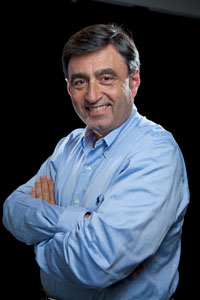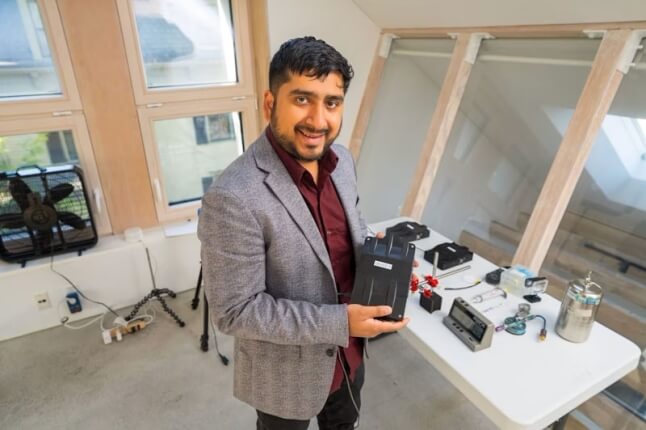News
Reproduced from http://www.laserfest.org
In the realm of the multiverse, Eric Mazur would clearly thrive. The Balkanski Professor of Physics and Applied Physics at Harvard University is a laser pioneer, education advocate, and innovative entrepreneur. Whether he's leading his booming research group that centers on nanophotonics and the interaction of ultrashort laser pulses with materials, or lecturing worldwide about the importance of peer instruction in undergraduate physics courses, Mazur's so busy that it may seem he has mastered the science of time travel and phase shifting. Or perhaps there's a more classical explanation to how he does it all: "Some people think I'm two different people," he offers.
Whether he's unlocked the mysteries of time and space, or simply knows how to balance work, life, and lasers, Mazur certainly sets a standard for scientists whose passions are as scattered as the light they study. Named a Presidential Young Investigator in 1988, he is a Fellow of both the APS and OSA and was honored as an APS Centennial Lecturer during the Society's centennial year.
His laser endeavors span a multitude of fields, including physics, chemistry, material science and optics.
Mazur uses femtosecond lasers (which operate at one millionth of one billionth of a second) to analyze and alter electron and atomic dynamics in various substances. His research has fascinating applications in data storage, optical communication and laser surgery. He writes: "Usually when light goes through a piece of glass, nothing happens to either the light nor the glass. With a powerful femtosecond laser pulse, both the laser light and the glass can be changed. When we concentrate the laser light using a microscope lens, we produce a microscopic explosion inside the glass, which leaves behind a minuscule ball-shaped hole. We use microexplosions as a miniature 'punch' to make patterns inside glass for such applications as high-density data storage. Microexplosions can also be used as a high-precision laser scalpel -- we have been able to perform surgery on a single, living cell without killing the cell!"
In addition to shaping patterns inside glass and slitting cells, Mazur has also been able to grow structures in three dimensions. "We use femtosecond laser pulses to grow polymers and metals on glass substrates for applications ranging from cell migration studies, to making engineered optical materials," he writes. He has also made strides in advancing optical computation, which, while he conjectures won't replace your Mac anytime soon, will have the ability to speed up the internet and considerably boost the power of computing in the long term.
10 years ago, perhaps in a vacant femtosecond when he had the chance to become bored, Mazur and his students decided to try something new. They put a silicon wafer in a vacuum chamber, flooded the chamber with sulfur hexafluoride, which is used in the semiconductor arena to etch circuits, and focused an ultrashort laser on the silicon. The sample turned black, and on its surface were microscopic spikes. Mazur had discovered a new material, which he called black silicon. He subsequently found that black silicon is thousands of times more sensitive to light than ordinary silicon, making it an ideal material for detectors and sensors in such industries as medicine and defense. He founded a company, SiOnyx, to commercialize the technology, and currently serves as Chairman of its Scientific Advisory Board.
A fervent advocate for science education reform, Mazur also developed the "Peer Instruction" method for teaching science in large lecture courses. But despite all his accomplishments, if you were to sit next to Mazur on an airplane and ask him about his profession, "I don't say I'm an applied physicist investigating matter using light," he admits. Rather, "I say I work with lasers. There's a certain aura with lasers." It's that aura, and the light around it, that captures the public's attention, and to which Mazur has dedicated his life's work to promoting and advancing. "As a scientist, there's a moral obligation to explain your work to the public," he affirms. "Every person is born a scientist. There's an innate curiosity in every person - we all want to understand how the world works. As scientists we have to do a better job to keep that curiosity alive."
###
LaserFest is is a collaboration between the American Physical Society, the Optical Society, SPIE and IEEE Photonics Society. From DVD players to eye surgery, the laser is one of the greatest inventions of the 20th century—one that has revolutionized the way we live.
Topics: Applied Physics
Cutting-edge science delivered direct to your inbox.
Join the Harvard SEAS mailing list.
Scientist Profiles
Eric Mazur
Balkanski Professor of Physics and Applied Physics




